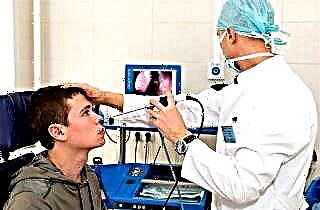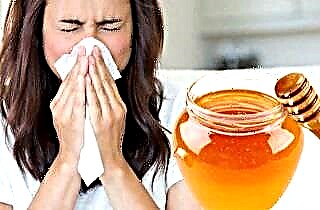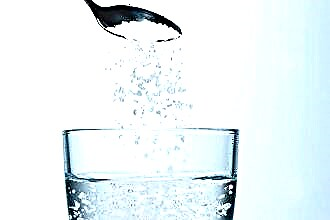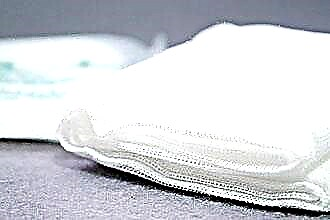Polyps form on the nasal mucosa and sinuses. The specific causes of the appearance of benign tumors are unknown to science, but it is clear that they are the result of prolonged irritation of the upper respiratory tract. To combat the disease, medical and surgical methods are used, and traditional medicine is also used. Treatment of polyps in the nose is selected individually in each case.
Features of the choice of therapy
 How to treat polyps in the nose, the otolaryngologist decides after examining the patient and a detailed study of the results of laboratory tests. It is also possible to conduct such studies as magnetic resonance imaging or computed tomography, they are necessary when localizing neoplasms in the paranasal sinuses. In the picture, the doctor sees the location of the tumors and their size, which directly affects the choice of therapy. The specialist takes into account the diseases that led to the appearance of benign neoplasms. The appearance of polyps can be caused by:
How to treat polyps in the nose, the otolaryngologist decides after examining the patient and a detailed study of the results of laboratory tests. It is also possible to conduct such studies as magnetic resonance imaging or computed tomography, they are necessary when localizing neoplasms in the paranasal sinuses. In the picture, the doctor sees the location of the tumors and their size, which directly affects the choice of therapy. The specialist takes into account the diseases that led to the appearance of benign neoplasms. The appearance of polyps can be caused by:
- allergy;
- bronchial asthma;
- deviated nasal septum;
- cystic fibrosis;
- fungal sinusitis;
- chronic rhinosinusitis;
- genetic diseases (primary ciliary dyskinesia);
- personal intolerance to aspirin and alcohol;
- Young syndrome, Churg-Strauss syndrome.
An important factor in the choice of therapy is the size of the lesions. Before curing polyps in the nose, the doctor specifies by examining how much the mucous membrane has grown. Tumors can be single or arranged in groups, and they also vary in shape and size. Considering all these factors, the most effective treatment for nasal polyps is prescribed.
Drug therapy
It is possible to use medications in cases where the neoplasms have just begun to fill the nasal passage. It is quite difficult to diagnose a violation in the early stages, but in some cases it is possible. Also, medications are used to recover from surgery, they help to avoid relapse. Let's get acquainted with the most popular medicines used to treat nasal polyposis.
| Group of drugs | Mechanism of action |
|---|---|
| Oral corticosteroids | Hormones inhibit the growth of polyps and lead to a decrease in their size. It is possible to completely remove neoplasms only in rare cases, since corticosteroid therapy is carried out for a short time, only 4 weeks, taking into account the gradual withdrawal of the drug. |
| Internal nasal corticosteroids | They also prevent further proliferation of the mucous membrane, are considered less dangerous for the body, since they are minimally absorbed into the bloodstream. |
| Antihistamines | Suppress the production of substances that react to allergens in the body. With nasal polyposis, treatment has a good effect if the disorder is caused by an allergy. Most often, second-generation antihistamines are prescribed, which do not have a sedative effect and a cardiotoxic effect. |
| Decongestants | Relieve swelling from the mucous membrane and facilitate nasal breathing. |
| Vasoconstrictor drugs | Facilitate the passage of air through the respiratory tract, constrict blood vessels, thereby relieving edema. They can lead to addiction and the development of allergies, so they can be taken no longer than 7-10 days. |
Immunomodulators | They increase the body's resistance to pathogenic microbes, fungi and bacteria, antibodies are produced from the action of the agent. |
Surgical intervention
The attending physician decides how to get rid of polyps in the nose, and most often his choice falls on surgery. It is possible to remove neoplasms using several technologies. They all have their own advantages and disadvantages, indications and contraindications. A correctly selected technique is the key to a successful operation and a long period of remission. Consider how you can remove benign tumors.
- Polypotomy is an operative intervention, the essence of which is the excision of neoplasms using a special loop. The advantage of this technique is that a whole group of nasal polyps can be removed at one time. It also has a negative side - a high probability of recurrence of growths. In case of acute respiratory diseases, disturbances in the work of the cardiovascular system and poor blood clotting, this procedure is prohibited. The operation is performed exclusively in a hospital, the rehabilitation period takes several weeks and includes the use of homeopathic remedies to prevent the reoccurrence of the disorder.
 Endoscopic method. A relatively new technique that allows operations to be performed with minimal risk of injury to healthy tissues and the absence of sutures. A mini-camera is inserted through small holes into the nasal cavity, which transmits the image to the monitor. Due to this, the doctor can see all groups of neoplasms, accurately assess their size and excision without touching the bone. Contraindications to this procedure are asthma and acute bronchitis, as well as menstruation in women. Rehabilitation of patients takes place quite quickly, no hospital stay is required.
Endoscopic method. A relatively new technique that allows operations to be performed with minimal risk of injury to healthy tissues and the absence of sutures. A mini-camera is inserted through small holes into the nasal cavity, which transmits the image to the monitor. Due to this, the doctor can see all groups of neoplasms, accurately assess their size and excision without touching the bone. Contraindications to this procedure are asthma and acute bronchitis, as well as menstruation in women. Rehabilitation of patients takes place quite quickly, no hospital stay is required.- Removal with a shaver. A microdebrider (shaver) is a special instrument that is inserted into the nose, destroys the affected tissue and sucks it in. The advantage of this technique is that a large number of polyps can be removed at one time. This has a positive effect on complete recovery; relapse is unlikely. In the presence of acute inflammation of the respiratory tract, colds and certain types of allergies, surgery is prohibited.
- Laser removal. With the help of a laser endoscope, neoplasms can also be removed. The device is inserted into the nose, the mucous membrane is preliminarily treated with an anesthetic, which minimizes discomfort for the patient. The doctor will heat the polyps until they have completely evaporated. The advantage of the technique is that it is anemic, the beam seals the vessels, and this prevents infection after surgery. Its disadvantage is the inability to open the nasal sinuses and completely remove all polypous tissue. Direct contraindications are pregnancy, obstructive bronchitis and the presence of a large number of cysts in the nose.
Folk remedies
 When nasal polyps are found, treatment can be carried out using traditional medicine. They can be effective for cysts that are just starting to develop. Also, natural medicines have a positive effect on mucous membranes after surgery. They help to significantly prolong the period of remission.
When nasal polyps are found, treatment can be carried out using traditional medicine. They can be effective for cysts that are just starting to develop. Also, natural medicines have a positive effect on mucous membranes after surgery. They help to significantly prolong the period of remission.
You can use any mixtures and decoctions only after consulting a doctor. Herbal components with high biological activity often cause allergies; they can only aggravate the situation if used incorrectly.
Consider what to do if polyposis affects the body.
- Rinsing the nose. Washing gives a good effect, most solutions and decoctions have antibacterial and disinfecting properties, they remove pathogenic microflora from the surface of the mucous membrane, soothe it and relieve swelling. To prepare rinses, use the following means:
- infusion of chamomile flowers;
- decoction of calendula;
- infusion of St. John's wort and other medicinal herbs;
- a mixture of baking soda or sea soda and boiled water.
The duration of the courses and the interval between them depends on the remedy that your doctor chooses.It should be borne in mind that some plants can react with pharmaceuticals.
- Treatment with celandine. The herb contains alkaloids, chelidonine and other active ingredients that help remove neoplasms both on the skin and mucous membranes. However, it is worth remembering that an overdose can lead to a burn, therefore you need to use no more than 2 drops of the drug 3 times a day, the course lasts 2 weeks, after which a break is taken. You can use an infusion prepared by yourself for washing. To do this, pour 1 tablespoon of dried herbs with a glass of boiling water and simmer in a water bath for 15 minutes. The finished product is insisted for 40 minutes, after which it is thoroughly filtered. Washing is performed once a day, the duration of the course is no more than 4 weeks.
 Propolis. A special ointment can be prepared from this useful beekeeping product if you mix it in an amount of 15 g with petroleum jelly (10 g) and butter (25 g). The resulting product is impregnated with cotton turundas and inserted into the nostrils for 30 minutes. Inhalation of propolis vapors will also be effective. He is tormented over low heat until smoke appears. The patient should bend over the dishes and breathe the healing substances that the agent releases when heated.
Propolis. A special ointment can be prepared from this useful beekeeping product if you mix it in an amount of 15 g with petroleum jelly (10 g) and butter (25 g). The resulting product is impregnated with cotton turundas and inserted into the nostrils for 30 minutes. Inhalation of propolis vapors will also be effective. He is tormented over low heat until smoke appears. The patient should bend over the dishes and breathe the healing substances that the agent releases when heated.- Honey for diseases of the upper respiratory tract should be included in the daily diet: it strengthens the immune system well, fights viruses and bacteria from the inside. They can treat the nostrils - so the active substances will act directly on the site of infection. The beekeeping product is applied on cotton swabs, and then the mucous membranes are gently smeared with it.
Precautionary measures
 Before using any method of treating polyps, it is imperative to conduct a detailed examination of the patient and pass all the tests necessary to detect the cause of the disease. In some cases, even the surgical removal of polyps does not give the desired effect, since the effect is on the consequence of the disease, and not the ailment itself. The correct solution would be complex therapy, which includes not only medicines, but also preventive measures. People prone to the formation of tumors in the nose should follow these rules:
Before using any method of treating polyps, it is imperative to conduct a detailed examination of the patient and pass all the tests necessary to detect the cause of the disease. In some cases, even the surgical removal of polyps does not give the desired effect, since the effect is on the consequence of the disease, and not the ailment itself. The correct solution would be complex therapy, which includes not only medicines, but also preventive measures. People prone to the formation of tumors in the nose should follow these rules:
- strengthen local and general immunity;
- spend more time outdoors;
- treat the nostrils with solutions and ointments that prevent infection and dryness of the mucous membrane;
- introduce fortified food into the diet;
- avoid contact with infected people;
- to carry out the prevention of respiratory diseases.
Let's summarize
Polyps can be cured using different methods, but they all need to be coordinated with the ENT. Each technique has its own indications and contraindications, therapy is chosen only after a detailed study of the clinical picture of the disease and research. It is strictly forbidden to prescribe any drugs or folk remedies to yourself, this can lead to serious consequences.

 Endoscopic method. A relatively new technique that allows operations to be performed with minimal risk of injury to healthy tissues and the absence of sutures. A mini-camera is inserted through small holes into the nasal cavity, which transmits the image to the monitor. Due to this, the doctor can see all groups of neoplasms, accurately assess their size and excision without touching the bone. Contraindications to this procedure are asthma and acute bronchitis, as well as menstruation in women. Rehabilitation of patients takes place quite quickly, no hospital stay is required.
Endoscopic method. A relatively new technique that allows operations to be performed with minimal risk of injury to healthy tissues and the absence of sutures. A mini-camera is inserted through small holes into the nasal cavity, which transmits the image to the monitor. Due to this, the doctor can see all groups of neoplasms, accurately assess their size and excision without touching the bone. Contraindications to this procedure are asthma and acute bronchitis, as well as menstruation in women. Rehabilitation of patients takes place quite quickly, no hospital stay is required. Propolis. A special ointment can be prepared from this useful beekeeping product if you mix it in an amount of 15 g with petroleum jelly (10 g) and butter (25 g). The resulting product is impregnated with cotton turundas and inserted into the nostrils for 30 minutes. Inhalation of propolis vapors will also be effective. He is tormented over low heat until smoke appears. The patient should bend over the dishes and breathe the healing substances that the agent releases when heated.
Propolis. A special ointment can be prepared from this useful beekeeping product if you mix it in an amount of 15 g with petroleum jelly (10 g) and butter (25 g). The resulting product is impregnated with cotton turundas and inserted into the nostrils for 30 minutes. Inhalation of propolis vapors will also be effective. He is tormented over low heat until smoke appears. The patient should bend over the dishes and breathe the healing substances that the agent releases when heated.

